Interview with Kouichi "Isuke" Yotsui
 The LSCM tracked down the elusive designer of Capcom's Strider coin-op during the 2009 Christmas season. Madness ensued. Two translators, a panic attack, and one faux pas on an international scale later, we managed to not only get an interview out of him but also to put him in contact with Darran Jones, editor of Retro Gamer, to boot! Despite the language barrier, Isuke was more than happy to answer any questions we provided. What follows below is the LSCM's revelatory look into the making of Capcom's beloved classic. Enjoy.
The LSCM tracked down the elusive designer of Capcom's Strider coin-op during the 2009 Christmas season. Madness ensued. Two translators, a panic attack, and one faux pas on an international scale later, we managed to not only get an interview out of him but also to put him in contact with Darran Jones, editor of Retro Gamer, to boot! Despite the language barrier, Isuke was more than happy to answer any questions we provided. What follows below is the LSCM's revelatory look into the making of Capcom's beloved classic. Enjoy.
Questions by Scion and Dire 51
Translated by Gaijin Punch
April 24, 2010
| You were a film student. Where did you get your degree? |
I graduated from the film department of Osaka Geijutsu Daigaku (Osaka School of Arts). I was taught by my professor, Kazuo Miyagawa, that a director must have the ability to fully grasp a scenario. Therefore, he must also be able to write a scenario. What's a scenario in a game? It's not one found in a story. It's simply a proposal [for the game]. I was taught by another professor, Fujiro Morita, about the importance of editing: specifically the importance of cutting something down to as little as possible. Even now, if a demo movie scene within a game is too long, an alarm goes off in my head. Obviously, a long movie scene which cannot be skipped in a game is awful (laughs). I learned from Professor Yoshitaka Yoda about the spirit of a movie creator. Of course, I am a pupil of Yoda (laughs).
I learned many techniques to express darkness, action, and composition in film. Actually there were many times I submitted many self-made films on 8mm. Figuring out how to get the plot to an acceptable size was good practice. Visuals... ideals... how to work with a team... there was so much I learned during university. |
| Do you still make films? |
 The several 8mm films I made in college, and the one 60-minute 16mm drama I directed are the only ones. I had a part-time job working lights in production film, so my name will turn up in the credits found on various search engines. Many people would think I'm a professional movie creator, but that's wrong. I made no more films after graduating and entering Capcom. The several 8mm films I made in college, and the one 60-minute 16mm drama I directed are the only ones. I had a part-time job working lights in production film, so my name will turn up in the credits found on various search engines. Many people would think I'm a professional movie creator, but that's wrong. I made no more films after graduating and entering Capcom. |
| Do you prefer making games, or films? |
| I like making games. I also like making films. I simply like making things. Personally, I find making games harder than making films. When I have the choice, I prefer doing the more difficult [thing]. |
| Which games did you work on at Capcom before you did Strider? |
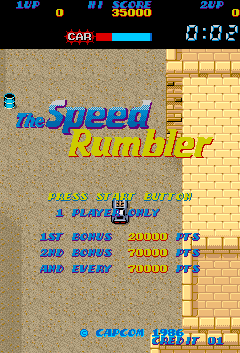 After graduating college, I entered Capcom. I was assigned to the 1st Development Divison. Tokuro Fujiwara was the head of the group. I drew bitmap objects for Rush 'n Crash and Top Secret. I helped with some other games developed within that group... objects and backgrounds. I didn't join Capcom and immediately become a designer. While working on graphics with developers, I would submit ideas and wait for them to get picked up. I was told to make Strider Hiryu about 2-3 years after joining Capcom. After graduating college, I entered Capcom. I was assigned to the 1st Development Divison. Tokuro Fujiwara was the head of the group. I drew bitmap objects for Rush 'n Crash and Top Secret. I helped with some other games developed within that group... objects and backgrounds. I didn't join Capcom and immediately become a designer. While working on graphics with developers, I would submit ideas and wait for them to get picked up. I was told to make Strider Hiryu about 2-3 years after joining Capcom. |
| How closely did the Capcom team work with Moto Kikaku in developing Strider? |
At that time, proposals for new games were only brought up within Capcom's development department. When our new head of development joined, Akio Sakai, he suggested we try products with other companies. One that he was able to set up was the deal with Motomiya Kikaku who was succeeding in the manga world. It was to be a test of running a serialized manga and a game at the same time. Details were unknown. Unknown? Our CEO, Kenzou Tsujimoto, rented a suite at the Shinjuku Hilton for an entire week and packed the victims into it like sardines. Those victims happened to be Masahiko Kurokawa (黒川雅彦), Kouichi Yotsui from Capcom, and a sales planner and the manga artist Tatsumi Wada from Motomiya Kikaku. Four total.
From time to time Akio Sakai and Tokurou Fujihara would join and help with the idea of the main character, the story, and setting etc. We couldn't leave until we had a a set concept.
 I pushed for a ninja concept. We were leaning towards an action game, so a ninja setting would've been convenient. However, I didn't want to make it some old movie. Outside the Hilton's windows was a futuristic city view of Shinjuku's skyscraper district. As the game creator and manga artists delusions clashed, the setting was decided: the near future. The hero would be derived from a ninja. We loosely decided on that. And with that, they departed. The manga artist went to Chiba and the game maker back to Osaka. I pushed for a ninja concept. We were leaning towards an action game, so a ninja setting would've been convenient. However, I didn't want to make it some old movie. Outside the Hilton's windows was a futuristic city view of Shinjuku's skyscraper district. As the game creator and manga artists delusions clashed, the setting was decided: the near future. The hero would be derived from a ninja. We loosely decided on that. And with that, they departed. The manga artist went to Chiba and the game maker back to Osaka.
When Kurokawa and myself returned, we created a world and story background set on those basic principles. We created Hiryu's rough design, and sent a couple of draft chapters to Motomiya Kikaku. For the overall main setting, Motomiya Kikaku cooperated. After going back and forth a few times, we finally decided on a rough image. And then, each side would take that "rough" image and adapt it to his media. Motomiya hired a professional manga artist who made further adjustments and dramatized the story while keeping the general idea the same. That was a necessary step.
And now, the game side: Masahiko Kurokawa was in charge of the development of the consumer version. He started his part of the simultaneous project on the Nintendo Famicom of all things. I was in charge of the arcade. I hung my head. The story and world created simultaneously, and even though I participated, this wasn't following the rules of creating an arcade game.
You can tell a complex story in a manga, or even in a consumer game which is not income-intensive, but this is impossible for an arcade game which is played on a per-coin basis. If you tell too much story, you destroy the gameplay. There was no problem with the basic premise of the Striders. There was no problem with the near-future world view. The problem was the story's details. Forgive me. My team changed the story only a very little bit. We changed the world to better fit a stand-alone arcade game.
|
| Who came up with the initial concept? |
Development of the first CP System (CPS) game, Daimakaimura, had begun. Then Development Division 3 (Kihaji Okamoto's group) began work on Lost World, the second CPS game. That left the third. I was told to write the plan by the group leader, Fujihara. The story and world view, as stated before, was a collaboration between Motomiya Kikaku and us. Creating the story and world was fun work, but the life of the game is in the game system. Fujihara, who was in development with Daimakaimura, stressed the importance of a new game system to me. He said an action game like Rolling Thunder where you fight while going up and down different layers would be good. PCBs back then did not hold an abundant amount of data for graphics. The CPS was developed to free ourselves from that. Repeated geographic blocks which were used for Daimakaimura's topography were drawn with elegant curves in Daimakaimura. I took those slanting surfaces to the next level, imagining a magnificent playing field. Running up steep slants, climbing vertical walls, running back down, jumping over things, hanging off ledges, and running, running, running to freedom.
After becoming bored from talks at the hotel in Shinjuku, I escaped to the hallway. I sat on the sofa out there, and comfortably took some notes. How far could I take an action game with 1 lever and 2 buttons? It was in unlocking that small mystery that the game design of Strider Hiryu was created.
|
| What was "The Falcon"? |
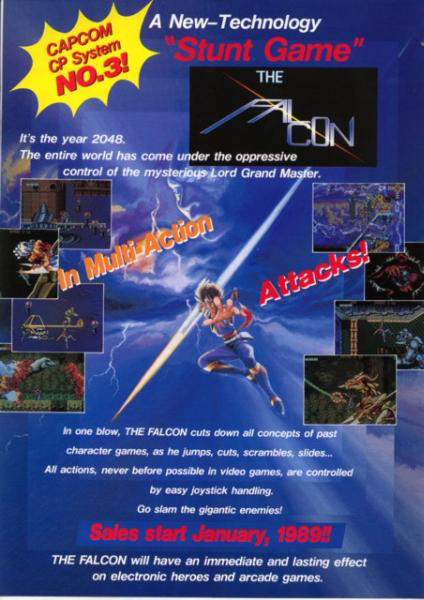 That brings back memories. Where'd you get this flyer? "Falcon" was one suggestion for the overseas title. The Japanese title was already decided. When we were getting it ready to go abroad, the overseas division within Capcom wasn't happy with Strider Hiryu. "Strider? What's that? A stick of candy? Does he have long legs? Is it an insect?" So we were told to come up with a different title for overseas. I came up with two: Ninja Dynamics and Falcon, of which Falcon was chosen. I thought Strider's jumping movements would remind people of a bird of prey. The deadline was approaching, so the flyer had to be made. I made that logo design at the same time I made the domestic title. By the way, eventually Capcom USA just said, that "Strider would be fine". (Laughs). So, I was overruled and the overseas title became "Strider". That brings back memories. Where'd you get this flyer? "Falcon" was one suggestion for the overseas title. The Japanese title was already decided. When we were getting it ready to go abroad, the overseas division within Capcom wasn't happy with Strider Hiryu. "Strider? What's that? A stick of candy? Does he have long legs? Is it an insect?" So we were told to come up with a different title for overseas. I came up with two: Ninja Dynamics and Falcon, of which Falcon was chosen. I thought Strider's jumping movements would remind people of a bird of prey. The deadline was approaching, so the flyer had to be made. I made that logo design at the same time I made the domestic title. By the way, eventually Capcom USA just said, that "Strider would be fine". (Laughs). So, I was overruled and the overseas title became "Strider".
On a side note, I created the English Strider logo as well. For the St. Rose Strider location test, I took a test PCB and went to California. There, one customer pointed to the control panel and asked me, "What does this say here?" He couldn't read my writing. I sank. (That logo is the current logo.) Incidentally, that flyer was done with oil painting. I stood an easel up next to the cabinet and painted it during game tweaks.
|
| The three robot helpers are an interesting aspect of Strider. How did that idea come about? |
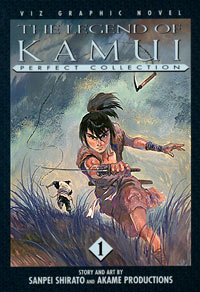 They're a product from popular shooting games at the time. I thought Strider should have an option help him out, like something in R-Type. A mushroom that circles around him. A mecha which helps attack. The characters in this game jump on a parabolic arc. I thought if there was something traveling in a circular motion using that arc as its base, they would be geometrically intertwined and create an interesting visualization. (I had the urge to add other visuals like that as well. Return-fire lasers, gravitational equipment, etc.) However, the ship used in this game isn't a machine, it's a human, and a human that travels along various geographic planes. Because of that, I made the mushroom walk as well... I gave him legs. They're a product from popular shooting games at the time. I thought Strider should have an option help him out, like something in R-Type. A mushroom that circles around him. A mecha which helps attack. The characters in this game jump on a parabolic arc. I thought if there was something traveling in a circular motion using that arc as its base, they would be geometrically intertwined and create an interesting visualization. (I had the urge to add other visuals like that as well. Return-fire lasers, gravitational equipment, etc.) However, the ship used in this game isn't a machine, it's a human, and a human that travels along various geographic planes. Because of that, I made the mushroom walk as well... I gave him legs.
In 1960's ninja comics (the one that most influenced me was Shirato Sanpei's Kamui Gaiden), the ninja had various animals to support them or attack their enemies. Things like dogs and hawks. Other than the mushroom, I thought the option mechas were a lot like these. The tiger, while made of metal, is a beast with refined movement. The hawk, a bird of prey which would support from above.
I wouldn't say they were successful, because they didn't follow that image or contribute a lot to the gameplay. |
| Why were some enemy robots wearing raccoon-skin hats? |
| I like fur hats. The initial designs had something in there about making the robots wear clothes. Why are robots and aliens always naked? I imagined that a silver robot wearing a suit from Savile Row would look cool. But, we wound up cutting the number of enemies to the bare minimum, and the stylish robots didn't make it, and we were left with the military style ones found in the final game. The only remnants of that idea that actually made it to the game were the racoon-skin hats. |
| In your Gameside interview you expressed disappointment with action games' storytelling abilities. Were there unused story elements in your version of Strider that you regretted omitting? |
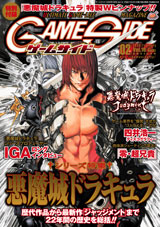 I didn't say that I was dissatisfied that the story must be truncated in an action game. I tried my hardest to express a deep and long-running story that would still be found in such an action game. I have no dissastifaction with that method of story telling. In fact, I like it. Changes of characters' behavior and actions, music, and timing are all expressed with non-verbal communication, so very few words are used. I don't dislike it. However, my conscious has a reaction when I dive into such a style. It's not that I'm always cutting out words, I want to use a lot of dialog and create a complex story, for example something with suspense, or mystery. The platform of expression is different. That's all. I was just trying to say that I wanted to combine the two for the game's theme. Comparing it to literature, a text adventure game is a novel. An action game is a poem. A poem connotates a beautiful, deep story within short sentences. I think differentiating the two styles of expression are necessary when making games. I didn't say that I was dissatisfied that the story must be truncated in an action game. I tried my hardest to express a deep and long-running story that would still be found in such an action game. I have no dissastifaction with that method of story telling. In fact, I like it. Changes of characters' behavior and actions, music, and timing are all expressed with non-verbal communication, so very few words are used. I don't dislike it. However, my conscious has a reaction when I dive into such a style. It's not that I'm always cutting out words, I want to use a lot of dialog and create a complex story, for example something with suspense, or mystery. The platform of expression is different. That's all. I was just trying to say that I wanted to combine the two for the game's theme. Comparing it to literature, a text adventure game is a novel. An action game is a poem. A poem connotates a beautiful, deep story within short sentences. I think differentiating the two styles of expression are necessary when making games. |
| Do you have any concept art left over from Strider's development? |
I think I have a copy of the story setting document somewhere in a closet. It's my hand-written one. Word processors were still not in general use in Japan in the good old days. I did not sign a non-disclosure agreement, however, I have decided that Strider's material is a property of Capcom from a morality reason.
Therefore, I cannot make those materials public. |
| You have expressed an interest in Yellow Magic Orchestra. One of YMO's best-known songs is "Tong Poo". One of the enemies in Strider has that name. Were any other parts of Strider inspired by YMO's music? |
YMO had a huge impact on that generation. It was probably inspired by them. Similarly, a Chinese women being skilled in martial arts like Bruce Lee from the Kung Fu boom was a given at that time in Japan. (Similar to Westerners' conception of all Japanese having a black belt in Karate.)
I wanted that scene to be more of a fight against a humanoid boss than a large boss. If it's going to be martial arts, a Chinese girl would look good. If they're going to be Chinese, then they should be called Tong Poo (東風). This is that YMO influence (laughs).
I made the pixel animations of their movements. I like dance-like movements. I play around too much. Excuse me. |
| What other major influences guided your work on the Strider coin-op? |
| Strider was made from the same series of events as all games back then. So, Strider was influenced by games from around and before that time. Actually, after it was done, I didn't think it was anything that hadn't been done before. I was disappointed, and thought to myself next time I'd have to do something that would be considered "new". |
| Many fans have noted a political subtext in the story, with Communist Russia turning into the Empire from Star Wars. Were you trying to make a statement there, or are they looking too closely? |
| There are no political implications. That appearance was simply me riding the wave of the times, which was of course The Cold War. You could blame my childish outlook on the world. It was, for the most part, taking the basic theme from a mainstream American film. When considering making an action game, [while vague], I want to make it an adventure that stimulates the senses. That's why I painted it with an irregular background. Japanese, American… the scenery for such things is abundant and easy to find in Japan and America. I wanted something else. Russia: Middle Eastern-style Mosques. That was the feeling at the time… my feeling at the time, anyway. There was a slight bit of hesitation to not make something that would turn into a movie that let the user have a look at "that world over there". Even for enemies, I found it important for them to have an impact and for the player to feel them. Also, there were other caricatures and gags aimed at the real world. No matter how realistic the world was, once you combine it with the setting of a silly action game, it becomes nothing more than a comical background for nothing more than entertainment purposes. If the main purpose is entertainment, then being able to escape from reality is important. Not just with Hiryu's various actions, but with the scenery as well, these so-called elements were combined freely. |
| The manual for the Genesis port mentions a "Moralos Island" as the Striders' home base. Concept art for the Famicom game and the manga show a rocky desert base. The NES game here in the West based them on a space station, "The Blue Dragon". Was this an example of the creative freedom each team had over their own product? |
| When we made the story's original setting, I drew the Strider base in the desert and the dragon in space. I always think of the story and visuals simultaneously, so I always draw as I write. When think of the world I'm creating, I not only consider what pictures have to be drawn to support the story, but conversely, what type of pictures the story would produce. That visualistic image remains in the FC version and the manga. As for "Moralos Island", it had nothing to do with me. |
| Might you know why the Famicom game was never released in Japan? |
| Since we were on different times, I don't know all of the story surrounding it. There is no such thing as a developer that doesn't want to release a finished game, so I would assume it was decided by the sales department or management. |
| Do you have Tatsumi Wada or Masahiko Kurokawa's email addresses? I would like to talk to them about their part in Strider's development, if possible. |
| I do not know Tatsumi Wada's address. Masahiko Kurokawa has already died. He completed the FC version of Strider, and supervised a lot of games in Capcom afterwards. Afterwards, [I] heard that he became independent with Tokuro Fujiwara. Akio Sakai also has died. Afterwards, he did a lot of businesses. He was a producer of [Final Fantasy: Spirits Within]. |
| Over the years, many rumors have sprung up about the unreleased SuperGrafx port of Strider. Can you tell us anything about that? Was it really in development? If so, why was it never released? |
| I know almost nothing about Strider Hiryu other than the arcade version. |
| This is going to sound odd, but did anyone on the production staff have a thing for teddy bears? |
| Teddy bears? That's... a kuma (bear)? What would that have to do with Strider or myself? |
 There are many rumors about Strider's development here in the West. For example, there is an often-repeated rumor that someone working on the SuperGrafx port went crazy. The rumor says that when Hiryu appeared in Street Fighter Zero II, the development team had him toss a teddy bear as a tribute to this programmer. There are many rumors about Strider's development here in the West. For example, there is an often-repeated rumor that someone working on the SuperGrafx port went crazy. The rumor says that when Hiryu appeared in Street Fighter Zero II, the development team had him toss a teddy bear as a tribute to this programmer.
Sometimes this rumor says the original creator of Strider was the one who went crazy. Sometimes it says he killed himself. Many people thought the rumor was about you. |
There's many difficulties one must face when making a game. When I was younger, I indeed felt like I shaved a bit of my life off each time I made a game. But, that's simply an illusion due to lack of experience. As I leveled myself up, I was able to create games with time to spare. I, too, have heard many rumors about people going crazy and even killing themselves during development. It sounds like a viable option. However, whether or not I think it's actually happened, I would have to say only an amazingly small part of me thinks so.
I think Strider throwing teddy bears was simply the [Street Fighter Zero] staff innocently goofing off. The graphic staff and planners will sometimes conspire against the planner and put something in without his knowledge. For Strider, someone put a panda in the battleship's cannon room without my knowing. The person who did that later became [Keiji] Inafune-kun's wife, fully supporting her husband's success. |
| How did U.S. Gold end up making Strider Returns, which was ostensibly a sequel to your game? Did you ever play it? |
| I know almost nothing of the series other than the arcade version of Strider Hiryu. I know that Strider Returns exists, but I have yet to play it. |
| Did you intend for Osman/Cannon-Dancer to be your own Strider sequel? |
I like games that exude their creator's individuality. For example, in a movie, if there's a striking character, of course, one would remember him for being striking, but it's got a lot to do with the person that put him there. Perhaps I should say what makes that person interesting. I consider that a service for me. It's like going to see a director's new film. Even though the director never appears on screen, his existence is based on an expression of his individuality. I pay to see his art. And, this is a problem I'm faced with. I have to consciously use my sense while entertaining the user. For me to make a game with the same style as Strider, I had to take the individuality that was expected from Isuke into consideration and follow up on that as a promise to the user. With that, I think whether or not Cannon Dancer is a direct sequel to Strider or not is rather trifling. And then, after that... well... I can't say that there won't be something like this again. :)
But as I recall... Cannon Dancer's hero Kirin is a member of the east wind clan: "Tong Poo" (東風). Or, he lived nearby. After I had imagined him like this, I made the game sprite. Therefore, Cannon Dancer might be called an irregular sequel. |
| Did Capcom try to get you to help make Strider 2? |
| What are your thoughts on Strider 2? |
| To me, it's completely different. However, my feelings aren't important. It's for people to enjoy. |
| Are you at all happy to see Hiryu and other Strider characters included in Marvel vs. Capcom and Namco X Capcom, among others? |
| Strider was not a game that sold well and brought in good income. Honestly, I'm amazed and glad they've been able to use him. |
| Also, apparently in SNK vs. Capcom: Card Fighters DS, the card for Ton Pooh says she's the Grandmaster's daughter. Did you intend for that to be the case? |
I didn't know about that setting. So, they were related (laughs).
To create drama, the main character and enemy often have a strong relationship. Like Luke Skywalker and Darth Vader. As the story continues, and the existence of the characters is understood, other settings which will further strengthen their relationship are added. However, I don't like that type of story telling, unless it is planned that way from the beginning but not told until later. Like at the end when everyone turns out to be related (laughs). That makes the world narrow.
I like the scene [in The Empire Strikes Back] where Darth Vader hires the bounty hunters to capture Han Solo. Showing characters outside of The Empire's usual resources broadened the scope of that world.
In the tale of Strider fighting The Grand Master, it wasn't totally necessary for Solo or the Ton Poo Sisters to appear. The same goes for the dinosaurs and the one-legged captain. But, I wanted to show characters that didn't have a direct relationship with Strider or the Grand Master, to expand Strider's world. |
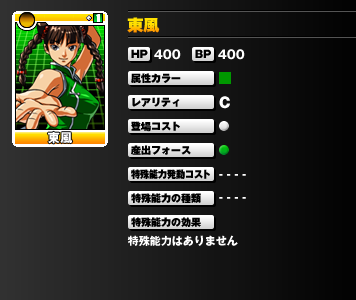
| Would you be open to making a Strider 3, if Capcom wanted you to? |
| Capcom owns Strider. It's for Capcom to decide. By the way, I'm a freelance planner. No matter what it is, if it sounds nice and I get the call, I'll fly out that way in a heartbeat (laugh). |
| Could I have a complete list of games you've worked on? |
Strider
Nostalgia 1907
The Karate Tournament
Lady Killer
Cannon-Dancer
Suzuki Explosion
That's all that I was the director of. I left out ones where I only helped with graphics or simply wrote a scenario, mainly due to laziness (laughs). |
| Which game do you think is your best work to date? |
| It's apples and oranges. It would be impossible to rank them. A parent can't pick his favorite child, can he? Each time I set out to make something different. No, that should be, "I set out to make something that hasn't been done." Also, I've yet to make a game that, once complete, I was able to look back and say that it reached my level of satisfaction.
|
| Any closing thoughts? |
| Looking back at [your original email], this is something very interesting to me, being in the middle of creating a new game. Because of your questions, I was able to search high and low within myself to find answers and rethink many things. The timing was simply superb, and even divine. Thank you for searching and finding me. I'll use your thanks in the game I'm making now, and do my best to make something you can can enjoy. My staff and I will work hard for all the fans who read over your site as well.
|
Kouichi Yotsui is from Osaka, Japan. He currently lives in Mt. Takao with his family and enjoys his daily bicycle commute to and from Tokyo Bay. The LSCM is profoundly grateful to Yotsui-san for taking the time to answer our questions, and wishes him the best of luck in all his future projects.
The LSCM would also like to thank everyone who participated in the madness that led to this interview: Hitoshi Akashi of Beyond Interactive, for forwarding my email to Yotsui-san last Christmas; CRV of the Game Developer's Research Institute, for inadvertently pointing me to Akashi-san; Suzaku, for initially being willing to translate, even though it ultimately didn't work out; Gaijin Punch, for coming through, kicking ass, and putting up with last-minute question dumps right before he took a trip out of town; Dire 51, for the moral support; and of course Darran Jones, for not writing me off during my ill-advised panic attack and then turning around and promoting the LSCM in Retro Gamer. You guys are awesome. Thanks again for your help.
 The LSCM tracked down the elusive designer of Capcom's Strider coin-op during the 2009 Christmas season. Madness ensued. Two translators, a panic attack, and one faux pas on an international scale later, we managed to not only get an interview out of him but also to put him in contact with Darran Jones, editor of Retro Gamer, to boot! Despite the language barrier, Isuke was more than happy to answer any questions we provided. What follows below is the LSCM's revelatory look into the making of Capcom's beloved classic. Enjoy.
The LSCM tracked down the elusive designer of Capcom's Strider coin-op during the 2009 Christmas season. Madness ensued. Two translators, a panic attack, and one faux pas on an international scale later, we managed to not only get an interview out of him but also to put him in contact with Darran Jones, editor of Retro Gamer, to boot! Despite the language barrier, Isuke was more than happy to answer any questions we provided. What follows below is the LSCM's revelatory look into the making of Capcom's beloved classic. Enjoy. The several 8mm films I made in college, and the one 60-minute 16mm drama I directed are the only ones. I had a part-time job working lights in production film, so my name will turn up in the credits found on various search engines. Many people would think I'm a professional movie creator, but that's wrong. I made no more films after graduating and entering Capcom.
The several 8mm films I made in college, and the one 60-minute 16mm drama I directed are the only ones. I had a part-time job working lights in production film, so my name will turn up in the credits found on various search engines. Many people would think I'm a professional movie creator, but that's wrong. I made no more films after graduating and entering Capcom. After graduating college, I entered Capcom. I was assigned to the 1st Development Divison. Tokuro Fujiwara was the head of the group. I drew bitmap objects for Rush 'n Crash and Top Secret. I helped with some other games developed within that group... objects and backgrounds. I didn't join Capcom and immediately become a designer. While working on graphics with developers, I would submit ideas and wait for them to get picked up. I was told to make Strider Hiryu about 2-3 years after joining Capcom.
After graduating college, I entered Capcom. I was assigned to the 1st Development Divison. Tokuro Fujiwara was the head of the group. I drew bitmap objects for Rush 'n Crash and Top Secret. I helped with some other games developed within that group... objects and backgrounds. I didn't join Capcom and immediately become a designer. While working on graphics with developers, I would submit ideas and wait for them to get picked up. I was told to make Strider Hiryu about 2-3 years after joining Capcom. I pushed for a ninja concept. We were leaning towards an action game, so a ninja setting would've been convenient. However, I didn't want to make it some old movie. Outside the Hilton's windows was a futuristic city view of Shinjuku's skyscraper district. As the game creator and manga artists delusions clashed, the setting was decided: the near future. The hero would be derived from a ninja. We loosely decided on that. And with that, they departed. The manga artist went to Chiba and the game maker back to Osaka.
I pushed for a ninja concept. We were leaning towards an action game, so a ninja setting would've been convenient. However, I didn't want to make it some old movie. Outside the Hilton's windows was a futuristic city view of Shinjuku's skyscraper district. As the game creator and manga artists delusions clashed, the setting was decided: the near future. The hero would be derived from a ninja. We loosely decided on that. And with that, they departed. The manga artist went to Chiba and the game maker back to Osaka. That brings back memories. Where'd you get this flyer? "Falcon" was one suggestion for the overseas title. The Japanese title was already decided. When we were getting it ready to go abroad, the overseas division within Capcom wasn't happy with Strider Hiryu. "Strider? What's that? A stick of candy? Does he have long legs? Is it an insect?" So we were told to come up with a different title for overseas. I came up with two: Ninja Dynamics and Falcon, of which Falcon was chosen. I thought Strider's jumping movements would remind people of a bird of prey. The deadline was approaching, so the flyer had to be made. I made that logo design at the same time I made the domestic title. By the way, eventually Capcom USA just said, that "Strider would be fine". (Laughs). So, I was overruled and the overseas title became "Strider".
That brings back memories. Where'd you get this flyer? "Falcon" was one suggestion for the overseas title. The Japanese title was already decided. When we were getting it ready to go abroad, the overseas division within Capcom wasn't happy with Strider Hiryu. "Strider? What's that? A stick of candy? Does he have long legs? Is it an insect?" So we were told to come up with a different title for overseas. I came up with two: Ninja Dynamics and Falcon, of which Falcon was chosen. I thought Strider's jumping movements would remind people of a bird of prey. The deadline was approaching, so the flyer had to be made. I made that logo design at the same time I made the domestic title. By the way, eventually Capcom USA just said, that "Strider would be fine". (Laughs). So, I was overruled and the overseas title became "Strider". They're a product from popular shooting games at the time. I thought Strider should have an option help him out, like something in R-Type. A mushroom that circles around him. A mecha which helps attack. The characters in this game jump on a parabolic arc. I thought if there was something traveling in a circular motion using that arc as its base, they would be geometrically intertwined and create an interesting visualization. (I had the urge to add other visuals like that as well. Return-fire lasers, gravitational equipment, etc.) However, the ship used in this game isn't a machine, it's a human, and a human that travels along various geographic planes. Because of that, I made the mushroom walk as well... I gave him legs.
They're a product from popular shooting games at the time. I thought Strider should have an option help him out, like something in R-Type. A mushroom that circles around him. A mecha which helps attack. The characters in this game jump on a parabolic arc. I thought if there was something traveling in a circular motion using that arc as its base, they would be geometrically intertwined and create an interesting visualization. (I had the urge to add other visuals like that as well. Return-fire lasers, gravitational equipment, etc.) However, the ship used in this game isn't a machine, it's a human, and a human that travels along various geographic planes. Because of that, I made the mushroom walk as well... I gave him legs. I didn't say that I was dissatisfied that the story must be truncated in an action game. I tried my hardest to express a deep and long-running story that would still be found in such an action game. I have no dissastifaction with that method of story telling. In fact, I like it. Changes of characters' behavior and actions, music, and timing are all expressed with non-verbal communication, so very few words are used. I don't dislike it. However, my conscious has a reaction when I dive into such a style. It's not that I'm always cutting out words, I want to use a lot of dialog and create a complex story, for example something with suspense, or mystery. The platform of expression is different. That's all. I was just trying to say that I wanted to combine the two for the game's theme. Comparing it to literature, a text adventure game is a novel. An action game is a poem. A poem connotates a beautiful, deep story within short sentences. I think differentiating the two styles of expression are necessary when making games.
I didn't say that I was dissatisfied that the story must be truncated in an action game. I tried my hardest to express a deep and long-running story that would still be found in such an action game. I have no dissastifaction with that method of story telling. In fact, I like it. Changes of characters' behavior and actions, music, and timing are all expressed with non-verbal communication, so very few words are used. I don't dislike it. However, my conscious has a reaction when I dive into such a style. It's not that I'm always cutting out words, I want to use a lot of dialog and create a complex story, for example something with suspense, or mystery. The platform of expression is different. That's all. I was just trying to say that I wanted to combine the two for the game's theme. Comparing it to literature, a text adventure game is a novel. An action game is a poem. A poem connotates a beautiful, deep story within short sentences. I think differentiating the two styles of expression are necessary when making games.  There are many rumors about Strider's development here in the West. For example, there is an often-repeated rumor that someone working on the SuperGrafx port went crazy. The rumor says that when Hiryu appeared in Street Fighter Zero II, the development team had him toss a teddy bear as a tribute to this programmer.
There are many rumors about Strider's development here in the West. For example, there is an often-repeated rumor that someone working on the SuperGrafx port went crazy. The rumor says that when Hiryu appeared in Street Fighter Zero II, the development team had him toss a teddy bear as a tribute to this programmer.